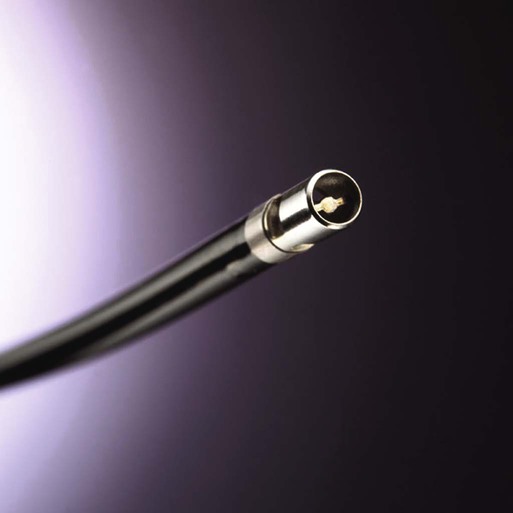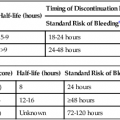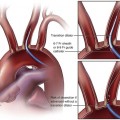Catheter-directed thrombolysis (CDT) has advantages over surgical thrombectomy in the treatment of venous or arterial thrombosis. Thrombolytic therapy avoids the morbidity and mortality associated with conventional surgical techniques and general anesthesia. It is less traumatic and causes less intimal damage compared with surgical balloon thrombectomy. CDT has the distinct advantage of providing both diagnostic information about associated vascular disease that may have incited the occlusive event and the opportunity to treat coexistent lesions with angioplasty and stenting. However, CDT can be time consuming and expensive, and response to therapy may be nonuniform, especially in chronic occlusions. More importantly, some patients are excluded from treatment because of contraindications to anticoagulation. These shortcomings have driven the evolution of percutaneous mechanical thrombectomy (PMT). PMT is particularly well suited for the treatment of thrombosed hemodialysis access grafts, and most commercially available devices have been approved by the U.S. Food and Drug Administration (FDA) for this application. As device design continues to evolve, potential indications for PMT also expand. Literature documenting efficacy in native arterial and bypass graft occlusion,1 deep venous thrombosis,2 pulmonary embolism,3 and transjugular intrahepatic portocaval shunt (TIPS)4 and portal vein thrombosis5 is mounting. The use of PMT devices as first-line therapy in the treatment of thrombosed hemodialysis access grafts is well established.6 These devices are particularly suited to this application for a number of reasons. The thrombus is usually acute and small in volume. Because thrombus is usually confined to the synthetic graft, the device may only have to be activated within the access, eliminating any potential endothelial damage. However, if thrombus extends into the native veins, the thrombus can be removed with the same device. Finally, embolization of thrombus fragment is better tolerated in the pulmonary arterial circulation than in a systemic arterial bed. Encouraging results have been reported in the following applications: The few absolute contraindications for the use of PMT are not application specific. For example, like other endovascular procedures, PMT is contraindicated in infected vascular access and in arterial occlusion of a nonviable limb. At minimum, before pursuing PMT, the patient must be able to tolerate an endovascular procedure and contrast medium. Additionally, if the lesion cannot be crossed, PMT is contraindicated. Technical concerns related to the use of all PMT devices highlight relative contraindications and should be considered in all applications before use. Severe anemia is a relative contraindication to PMT because substantial intraprocedural blood loss can be caused by these devices. This occurs both through aspiration of blood through the catheter and by mechanical destruction of erythrocytes.11 Furthermore, substantial hemolysis can be detrimental in patients with renal insufficiency because plasma free hemoglobin can incite renal tubular damage. Patients with significant cardiopulmonary disease, especially right-sided heart failure, right-to-left shunts, and pulmonary hypertension, may not be good candidates for venous or dialysis access PMT because of the potential embolization of thrombus fragments during the procedure. Although most devices cause no apparent clinically significant vessel damage, the direct wall contact devices theoretically cause more intimal damage. This consideration may be important when choosing the appropriate device in a native vessel or conduit. All PMT devices engage thrombus, fragment it, and most dispose of the effluent. A variety of approaches have been developed to achieve these goals (Table 7-1). However, despite continued innovation, no ideal device exists. There seem to be as many classification schemes as there are devices. The following categories were introduced by Sharafuddin and Hicks12 and still provide an orderly framework to review commonly used devices in current clinical practice: TABLE 7-1 Mechanical Thrombectomy/Thrombolysis • Percutaneous aspiration thrombectomy • Pullback thrombectomy and trapping • Recirculation mechanical thrombectomy • Direct contact mechanical fragmentation The Greenfield transvenous pulmonary embolectomy catheter (Meditech/Boston Scientific, Watertown, Mass.) is the prototype pullback thrombectomy device and was introduced in 1969. Although bulky and difficult to maneuver, it was the first catheter to show successful outcomes in the treatment of pulmonary embolism.13 Sustained syringe suction is applied to a vacuum cup attached to a 12F double-lumen balloon-tipped catheter. The Amplatz Thrombectomy Device (ATD; Microvena, White Bear Lake, Minn.) consists of a 6F or 8F catheter with a 1-cm long metallic capsule at its end. The capsule houses an impeller that is driven coaxially up to 150,000 rpm by high air pressure (50-100 psi). Negative pressure at the catheter tip draws adjacent thrombus into the end hole of the capsule, where it becomes fragmented by the rotating blades. The fragmented thrombus is then expelled radially through two side holes, and cleaved particles are repeatedly reaspirated, further macerating the thrombus. The thrombus is broken down to small particles of which 98.8% to 99.2% are less than 13 µm. The remaining particles measure 13 to 1000 µm.14 The driveshaft extends through a Y connecter at the proximal end of the catheter, allowing infusion of contrast agent or adjunctive fibrinolytic agents. Although the ATD has gained acceptance in multiple clinical applications, its poor steerability and the tendency of the rotating cable to break when activated over acute angles are limitations. The 6F catheter shaft is made with a polyether block amide (Pebax) that promises better torque control. The current iteration of the ATD is the Helix ClotBuster Mechanical Thrombectomy Device (ev3, Plymouth, Minn.) (Fig. e7-1). It represents a modified 7F version of the ATD and is reportedly more tolerant of acute angles. The device is powered by compressed air or nitrogen and operated via a reusable pedal-operated foot control. Additionally, the impeller is directed perpendicular to the vessel wall (so-called TurboWash Wall Washing Technology), which is designed for improved removal of adherent mural thrombus without vessel wall contact. The Helix ClotBuster is available in both 75- and 120-cm working lengths. It is approved for use in both dialysis grafts and native vessel dialysis fistulae.
Thrombectomy Devices
Indications
Contraindications
Equipment
Product
Company
Mode of Operation
Pronto Extraction Catheter
Vascular Solutions
Aspiration thrombectomy
Diver CE Clot Extraction Catheter
Export AP Aspiration Catheter
Medtronic
Aspiration thrombectomy
Fetch Aspiration Catheter
Medrad
Aspiration thrombectomy
Helix ClotBuster Mechanical Thrombectomy Device
ev3
Rotational mechanical thrombectomy
Rinspirator Thrombus Removal System
ev3
Infusion and aspiration thrombectomy
Trellis Peripheral Infusion System
Covidien
Isolated pharmacomechanical thrombolysis via a dispersion wire between two occlusion balloons
AngioJet
Medrad/Possis
High-velocity water jets enclosed in the catheter capture, microfragment, and remove thrombus.
ThromCat Thrombectomy Catheter System
Spectranetics
Internal helix produces a vacuum and macerates thrombus while simultaneous flushing and extraction facilitate thrombus removal.
Arrow-Trerotola Percutaneous Thrombolytic Device
Arrow
Rotating wire fragmentation basket macerates thrombus.
Cleaner Rotational Thrombectomy System
Argon Medical
Sinusoidal vortex wire rotates and macerates thrombus.
D-Clot Thrombectomy Catheter System
Artegraft
Spiral conveyer shaft rotates and macerates thrombus while debris is aspirated through a sheath.
Merci Retrievers
Concentric Medical
Mechanical thrombectomy with aspiration and proximal flow arrest via a balloon-guiding catheter (neurovasculature)
Penumbra System
Penumbra
Separator-assisted clot debulking and aspiration (neurovasculature)
Straub Rotarex Catheter
Straub Medical
Rotating spiral creates a vacuum and macerates thrombus, which is discharged into a collection bag.
X-Sizer Thrombectomy Catheter System
ev3
Mechanical thrombectomy with a helical cutter
Fogarty Adherent Clot Catheter
Edwards Lifesciences
Mechanical thrombectomy via a corkscrew-shaped stainless steel cable
Fogarty Graft Thrombectomy Catheter
Edwards Lifesciences
Mechanical thrombectomy via a double helix ring
Xtraktor Thrombectomy Catheter
Xtrak Medical
Mechanical thrombectomy via a rotating spiral shaft
OmniWave Endovascular System
OmniSonics
Ultrasound-accelerated thrombolysis
EkoSonic Endovascular System
Ekos
Ultrasound-accelerated thrombolysis
Acolysis Ultrasound Thrombolysis System
Vascular Solutions
Ultrasound-accelerated thrombolysis
Pullback Thrombectomy
Recirculation Mechanical Thrombectomy
High-Speed Rotation Devices
![]()
Stay updated, free articles. Join our Telegram channel

Full access? Get Clinical Tree


Thrombectomy Devices







